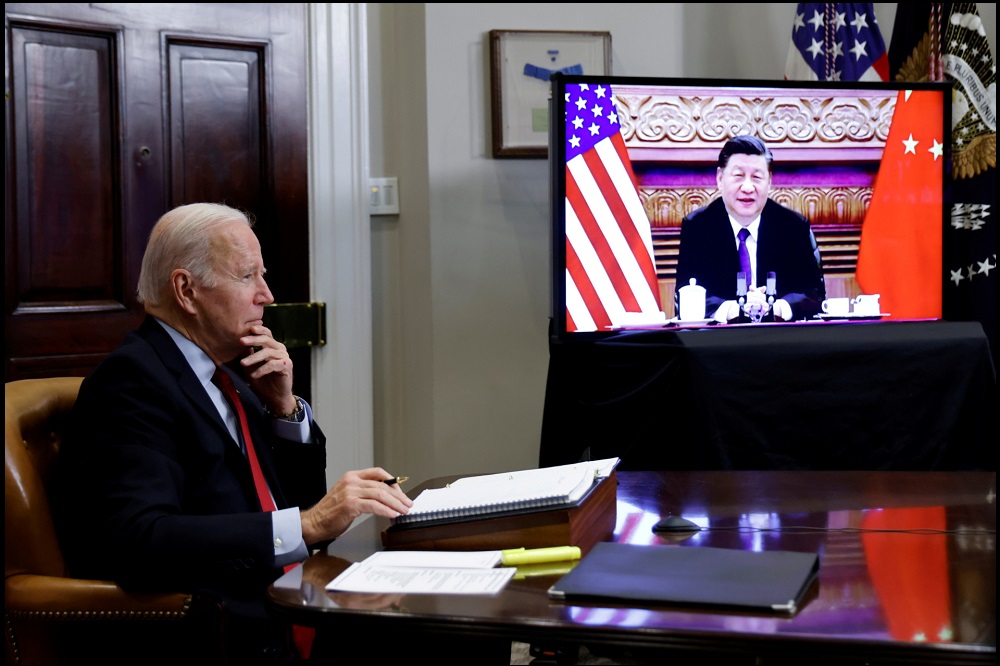New York Times Reports U.S. Intel Agencies Spent Three Months Seeding Information Into Russia Through China
There’s a New York Times article getting attention today, as the article frames a narrative of the U.S. intelligence community and diplomatic offices trying to get China to influence Russia away from invading Ukraine.
 However, as with all NYT reporting of the U.S. intelligence apparatus, the information within the article must be viewed through a different prism to understand the real motives being discussed.
However, as with all NYT reporting of the U.S. intelligence apparatus, the information within the article must be viewed through a different prism to understand the real motives being discussed.
Never ascribe to incompetence, that which can be explained by intent.
The Deep State narrative, what the NYT reports, begins thusly:
WASHINGTON — Over three months, senior Biden administration officials held half a dozen urgent meetings with top Chinese officials in which the Americans presented intelligence showing Russia’s troop buildup around Ukraine and beseeched the Chinese to tell Russia not to invade, according to U.S. officials.
Each time, the Chinese officials, including the foreign minister and the ambassador to the United States, rebuffed the Americans, saying they did not think an invasion was in the works. After one diplomatic exchange in December, U.S. officials got intelligence showing Beijing had shared the information with Moscow, telling the Russians that the United States was trying to sow discord — and that China would not try to impede Russian plans and actions, the officials said.
The previously unreported talks between American and Chinese officials show how the Biden administration tried to use intelligence findings and diplomacy to persuade a superpower it views as a growing adversary to stop the invasion of Ukraine, and how that nation, led by President Xi Jinping, persistently sided with Russia even as the evidence of Moscow’s plans for a military offensive grew over the winter.
This account is based on interviews with senior administration officials with knowledge of the conversations who spoke on the condition of anonymity because of the sensitive nature of the diplomacy. The Chinese Embassy spokesman, Liu Pengyu, answered an earlier request for comment a half-day after this article was posted online, saying, “For some time, China has actively promoted the political settlement process of the Ukraine issue.” (read more)
The article goes on to say that China shared the information with Russia, and then outlines how Russia and China are the geopolitical partnership in the modern era. However, here’s the part where the motive and deep state angles are missed.
Do not view the details of this article outline through the prism printed by the intelligence apparatus; instead, view this article through the prism that U.S. intelligence and State Dept operatives were planting information into China, knowing it would be shared with Russia.
Obviously, anyone who follows geopolitical events already knows that China and Russia are partners against the west. Why would the U.S. intelligence apparatus think China would not share the details of the intelligence and/or seek to block Russian intents? The short answer is, they wouldn’t.
The White House, U.S. intel and Dept of State would know, to a guaranteed certainty, that any information they shared with China would get directly delivered to Russia. All information the United States would share (think ‘seed’) with China, would therefore be intended to get to Russia.
As a consequence, if the White House, CIA, State Department or U.S. intelligence community wanted to provoke Russian aggression, they would purposefully put that provocation material into the hands of the Chinese. THAT is the main takeaway from the New York Times article.
The U.S. intelligence apparatus was seeding information to Russia via China for three months prior to the triggering point.
What that provocation intelligence contained is unknown, but the U.S. delivering it through a third party is now confirmed.
It’s all a competing disinformation, manipulated information and propaganda warfare folks. Do not take any claim, any construct, any narrative from any side, at face value. This is where the underlying alignment of U.S. media becomes critical.





Post a Comment